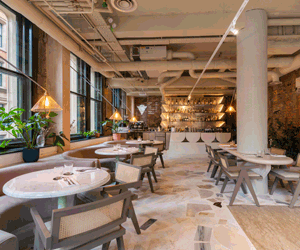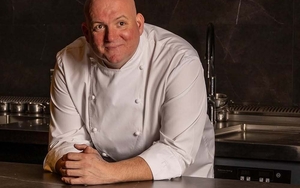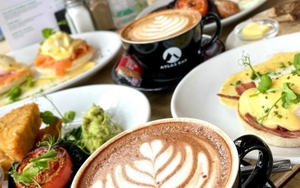I REALISED I was on the road to ruin – Mother’s Ruin – when I started taking my gin neat. We’re not talking a bit part in Hogarth’s Gin Lane print, where the degrading effects of 18th century consumption are there for all to see.
This is just pure appreciation of the nuances of current indie-made spirits: ditch the tonic, even the pure quinine stuff like Fevertree, so you can savour the complex botanical scents and tastes of the small batch revolution.
Moss, gorse, wild raspberries and bilberries all went into the Bonds' 30 litre pot still
My olfactory quest took in two small but acclaimed producers – Forest Gin, grounded in foraged plants and fruits from Macclesfield Forest (pictured above) and, emanating from a Burnley terraced house, Batch, a spirit laden with Levantine spices (gifts of the three Kings) frankincense and myrrh.
Gin is big business these days. Gin ambassadors roam the earth (like Manchester’s own ‘Cocktail Hobbit’ Jamie Jones); champions such as @ginfuelledbluestocking blog about it; definitive books about it appear (try Matt Teacher’s The Spirit Of Gin from Cider Mill Press); and, above all, small independents are distilling it in their kitchens and cellars, following the groundbreaking example of Ian Hart’s Sacred Spirits from Highgate in London.
That’s not to disparage the likes of Greenalls in Warrington, the world’s oldest and second largest gin distillers who, alongside their big brands, have come up with Thomas Dakin, the self-styled Manchester Gin, named after their founder. They are looking for premises in the city to make that opportunistic branding more authentic.
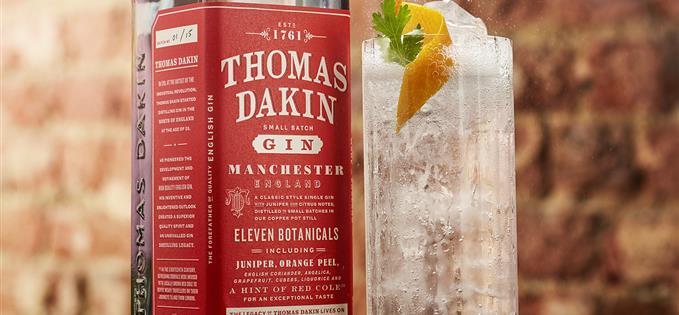 Dakin's Manchester Gin
Dakin's Manchester GinI like it – it’s quite savoury with hints of horseradish, liquorice and grapefruit and retails at £29 – but it’s not a patch on Forest and Batch, both of which are made in minute amounts and boast interesting back stories – always a winner.
Forest Gin has come a long way in a short time. Karl and Lindsay Bond only began distilling in May 2014, using botanicals they collected on weekend walks in Macclesfield Forest near their Langley home with help from daughter Harriet, 8, – moss, gorse, wild raspberries and bilberries all went into the 30 litre pot still the Bonds customised using an old tea urn. The copper vessel they originally bought took out the impurities but also the essential wild flavours. They wanted those wild flavours.
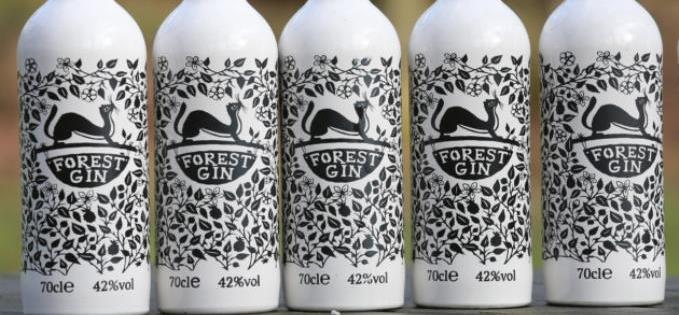
 The Bonds
The BondsAll this took place and still does in a room in their Seventies semi, a world away from the glamorous reach their gin has achieved thanks to a chance encounter. The Bonds had given a bottle of their gin to chef Simon Rimmer to road-test in his West Didsbury restaurant Greens. Cue Ivan Dixon, wines and spirits buyer for Harvey Nichols on a trip home to Manchester.
“Serendipitously I was t the bar waiting for a table. The bottle caught my eye and I asked to try it – even though it hadn’t yet been added to the drinks list or set up on the till. I was reluctantly given a straight sample and a G&T, and immediately got in touch with Karl, before my starter had been served,” he recalls.
It hit the HN shelves for Christmas 2014 and almost a year on is still one of their best sellers, even at nearly £60 a bottle. You’ll also find it, in its distinctive ceramic bottle featuring a weasel, at the likes of Heston Blumenthal’s Bray pub The Hind’s Head and at Jason Atherton’s Blind Pig in Soho. Hype? Hardly. This is the real deal – the epitome of the London dry gin style. Perhaps the best I’ve ever tasted. The reason – all that foraging comes through in the lingering aftertaste of citrus, oak, herbiness, berry fruits and even lavender, though that wasn’t mentioned as an ingredient.
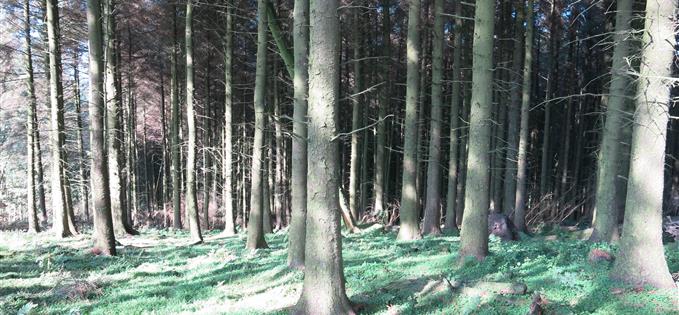
In Karl’s still room, after we had been out picking moss, ferns and blackberries in ther Forest, former hunting grounds of the Earls of Chester, we tasted it alongside ‘rival’ Portobello Road, popular among mixologists. This was muted on the nose, alcoholic in the mouth; the Forest was limpid and smooth to taste with the glorious gallimaufry of aromas raging through on the palate.
The only problems for the Bonds’ cottage industry is meeting demand. The German producers of those eye-catching flasks are struggling to keep up and the Bonds are reluctant to expand beyond their niche market in case quality suffers. One batch – three days’ preparation including mashing botanicals with a pestle and mortar, two hours in the still – produces 75 bottles; they are up to two batches a week, possible now Karl has now given up his IT day job.
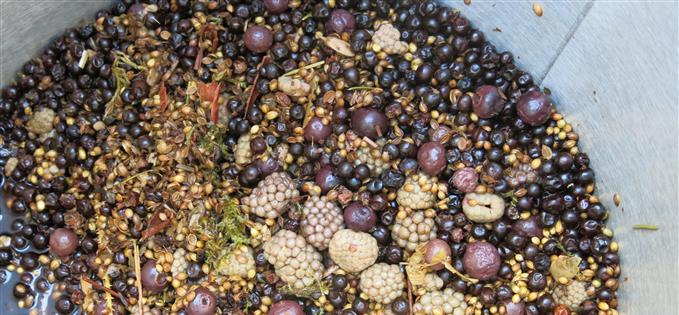 Botanicals in the aftermath of distilling Forest
Botanicals in the aftermath of distilling ForestThey insist on using the finest grain spirit from Northern Italy as the base; bought in, non-foraged essential ingredients include organic coriander and juniper berries. Once they tried organic Cheshire saffron (not cheap) but that didn’t work. Neither did nettles or elderflower. Their purism is astonishing – the spirit comes out at 90 per cent; to dilute it to the 42 per cent they sell it at they opt for pure Wildboarclough spring water from up the road.
Ivan Dixon sums the end product up beautifully: “The product offers a perfect combination of provenance, authenticity, quality and packaging, along with a nice background story behind the brand.
“The striking bottle style and screen print design give Forest immense shelf presence, visually engaging customers and prompting them to ask questions about the brand. The flavour profile of the gin itself is complex and unique, and is unlike any other available.”
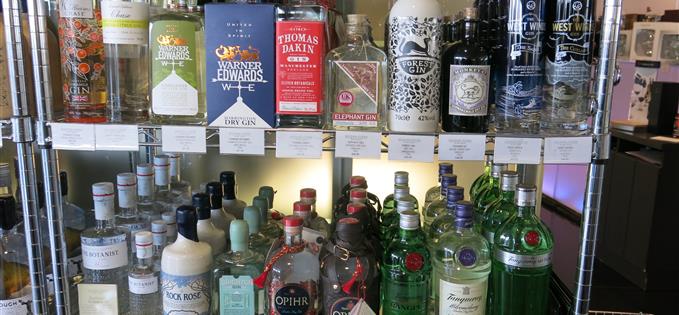 Forest's distinctive bottle
Forest's distinctive bottleHarvey Nichols has tapped into the artisanal gin explosion – just check out the shelves in the Second Floor food market. Dixon again: "In general, it's an incredibly exciting time for the gin category and gin drinkers. In contemporary terms, gin has never been so popular – and historically nowhere near as diverse and interesting. The overall quality of emerging new brands is generally very good, and the increasingly imaginative use of unusual botanicals and clever marketing means that very few brands are alike.
“The small batch ‘craft’ movement is taking gin in the direction of provenance and locality, which shares parallels with the craft beer market. At Harvey Nichols we stock examples of craft gins from all areas of the UK, which are proving to be incredibly popular with our customers. Gin retail sites across the company are growing at a steady rate of 35 per cent year on year, largely driven by the increased number of craft expressions on our shelves.”
His own favourite? “Difficult to choose but recently launched craft gins that are particularly outstanding include Cotswolds Gin from the newly established Cotswolds Distillery, Dodd's Gin from South London and Warner Edwards from Harrington.”
Personally, I’d add to that list Batch Gin., It’s been distilled up the road from me in Burnley, since production was switched from Winchester this year, but I only found out about it from the Forest folk. Batch is a fellow minnow, albeit with its three stills it could produce, according to demand, 200 bottles a week and more. It sells online at £35 a bottle; to taste it in Manchester check out Atlas Bar on Deansgate., where it is their best selling gin and the base for signature cocktail Northern Star.
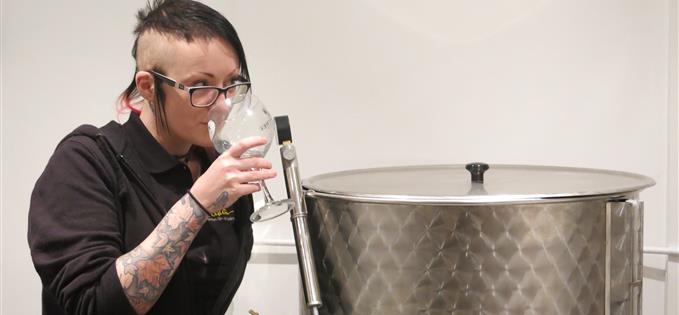 Emma Coughlin
Emma CoughlinBurnley production was initially in the hands of Ollie Sanderson, nephew of Batch founder Phil Whitwell, but now it has been taken over by his partner Emma Coughlin, 31, a nu metal fan who admits she is a newcomer to craft gin but is obviously hooked on the beguiling flavours she can conjure up in their basement still. The lemongrass she added to the roster of botanicals in Phil’s original formula comes through as we sample, while restraining her ebullient shi tzuh Lo Pan from bounding down the steps. This is what a cottage industry is all about.
In homage to Burnley’s legendary love of French liqueur Benedictine, dating back to the Great War, Batch have created a cocktail called Burnley Bling featuring ‘Benny’, their gin, Chambord, Grenadine and soda or prosecco. Looking forward to trying it.
Transcending the parochial, Batch has already won a silver medal at the World Spirit Competition in San Francisco and been inspired by the innovative gin culture of contemporary Spain. “I’d like to export our gin to Madrid, which has had such an influence on the way I view gin and the way we ought to serve it over here to the increasingly young audience I see turning up at our gin festivals,” says Phil Whitwell, a former craft beer brewer.
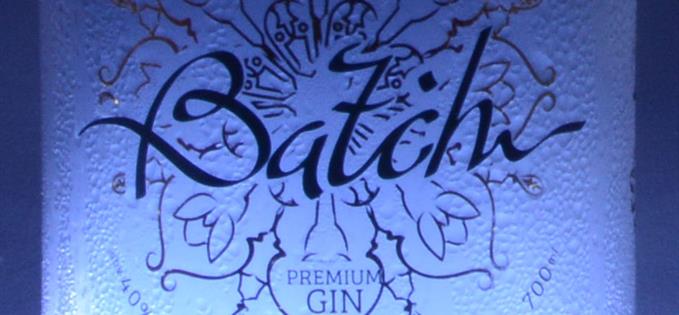
“In Madrid it’s not so much the gin itself but the way it is served that I love. In big copa glasses where you can swirl it about, perhaps garnished with a sprig of rosemary, say. All that was our inspiration for our serving Batch with frozen raspberries and lime peel. I want to take it away from the highball glass, juniper-dominated norm. New gins like ourselves, Forest and Liverpool Gin are leading the way.”
Away from the norm? Hence the presence of Middle Eastern incense – frankincense and myrrh both feature in a recipe that isn’t secretive about its botanicals. They are listed on the clear glass bottle. Juniper, coriander, cloves, allspice and the like are staples of artisan gin, but the frankincense and myrrh, both tapped from tree bark in the Middle East, add a touch of daring. They have a resinous pungency (myrrh gives Fernet Branca its medicinal finish), so have to be used discreetly. I can’t claim to recognise them among the welter of coriander, cardamom and a slight pepperiness that dominate the spicy nose and well-rounded taste. Gold, to complete the Nativity theme? The bottle is sealed with the stuff.
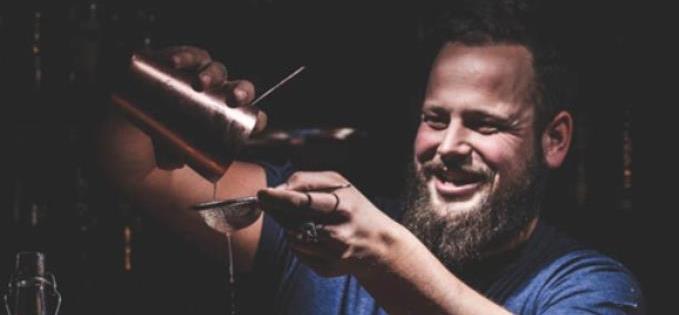 Fozzy hard at work at gin-centric Tariff and Dale
Fozzy hard at work at gin-centric Tariff and DaleThe Spanish way of serving in copas with appropriate garnishes (juniper and berries) is practised at Tariff and Dale bar in the Northern Quarter, where the new younger audience for the spirit work their way through the extensive range – classic London gin Portobello Road is the current best-seller – mix and matching appropriate tonics.
“The Spanish Mare with its herbs goes perfectly with the Med tonic featuring thyme and half the amount of quinine,’’ says bar manager Oliver ‘Fozzy’ Foster. “Using the copa glasses is all about appreciating the aromas. It’s trendy to be into gin these days and this is reflected in our cocktails, too. Martinis are hugely popular, as is our refreshing gin-based Berry Collins and Southside, a kind of gin Mojito – both featuring Portobello."
Meanwhile, Lunya, the new Catalan restaurant/bar/deli in the Barton Arcade bosts one of the largest Spanish gin bars outside Spain. I aim to work my way through them from Ampersand from Cadiz to Xoriguer from Menorca. The road to ruin is looking very attractive these days.
You can follow Neil Sowerby on twitter @AntonEgoManc






